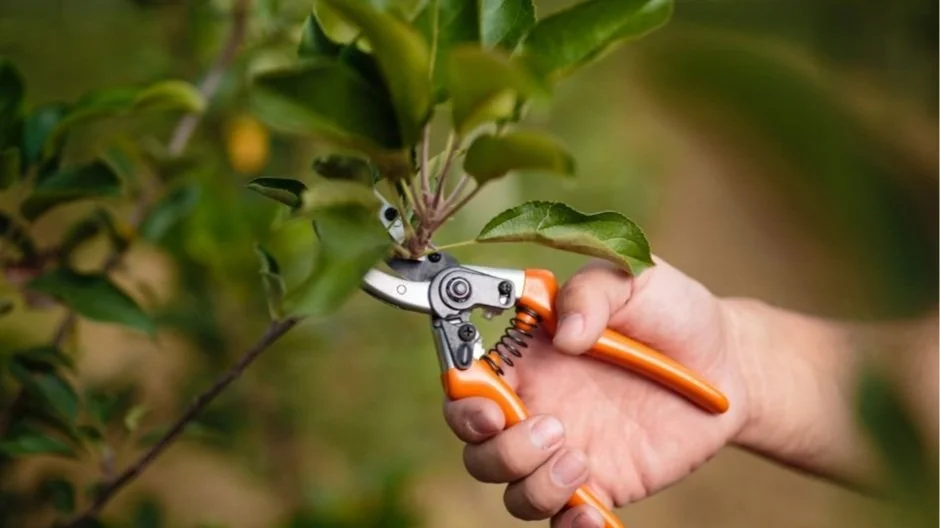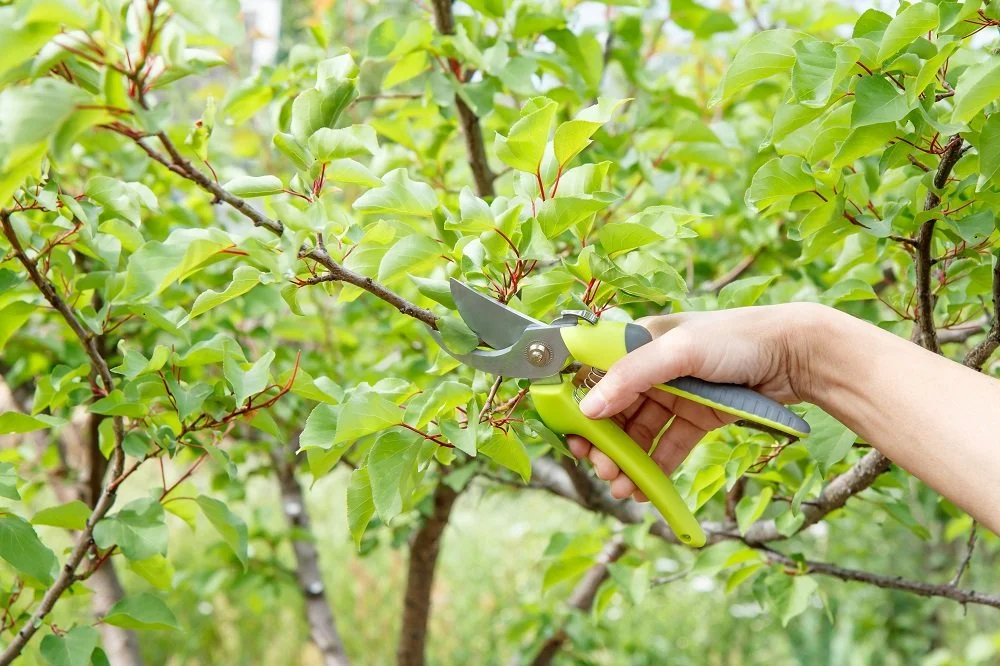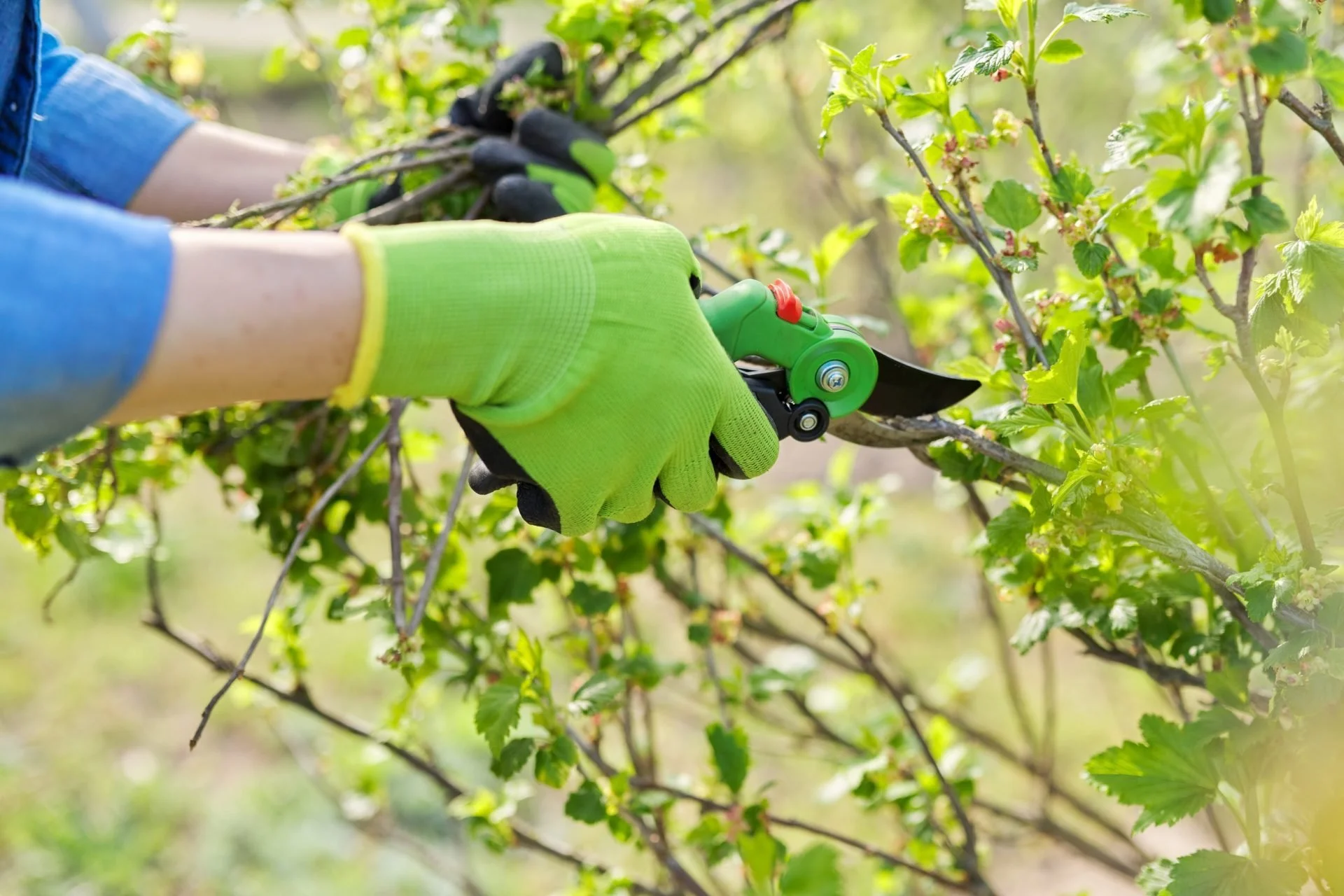Unveiling Nature's Elegance
The Magic of Pruning Trees
Discover > Homesteading > Unveiling Nature's Elegance: The Magic of Pruning Trees
Pruning trees, shrubs, and plants around our property can be something of a chore when you think about it but it has to be done. But before you go on a trimming spree, you can't just cut broken branches and call it a day.
There are certain ways to approach pruning to make all the effort worthwhile. Factors like the season, tree health, and removal of certain hazards like tree branches are the main things to consider before trimming trees or plants in your garden.
If you've ever marveled at the graceful beauty of well-maintained trees at a ranch in the Texan outback, you've likely witnessed the transformative power of pruning. Pruning is an ancient art that allows us to shape and enhance nature's masterpieces, revealing their true splendor.
In this article, we will embark on a journey to uncover the magic of pruning trees, exploring the benefits, techniques, and essential tips to prune branches to help you unleash nature's elegance in your own backyard.
The Three Reasons for Pruning Trees
In the world of pruning trees, there are three main reasons why one would grab an axe or chainsaw and start putting some elbow grease into the act of cutting off limbs from those mature trees in your backyard. Safety, tree health, and aesthetics are the main reasons for pruning trees. Reading up on the main reasons for this chore of a task will help you decide how to go about pruning trees.
The Pruning Process: Nurturing Tree Health and Growth
When pruning trees, one of the reasons behind it is to promote growth and solid plant health. In order to prune trees for this reason, you can expect stable development of spring flowering trees once spring growth starts. But one has to know the specifics to ensure better results for you and that tree in your backyard.
Here are specifics and things you have to consider when pruning fruit trees, to promote vigorous growth and a healthy plant.
Timing plays a crucial role in successful pruning. Early spring, when trees are still dormant, is an ideal time for most pruning activities. Pruning during this period promotes healthy spring growth and minimizes stress on the tree. However, some trees may require pruning during late winter or other specific times. Understanding the timing for different tree species is key to achieving optimal results.
Pruning trees helps maintain their overall health by removing dead or diseased branches, improving air circulation, and reducing the risk of pests and diseases. It stimulates new growth, ensuring a vibrant and lush canopy that stands the test of time.
Beyond the Dead Branches: Tree-Pruning for Aesthetics
Aesthetics is one reason why people prune their trees on their property. This is most apparent in the different Ranches and Vineyards spread throughout the Texas Hill Country. The trees at these places are well-kept and are a marvel to look at.
Now, as most of us don't have sprawling ranches to call backyards, we can still spruce up the trees inside our properties. After all, if you're going to trim down a house-sized plant, might as well make it look nice.
Pruning trees is like unlocking the hidden potential within them, enabling them to thrive and display their captivating form. It involves selectively removing branches to enhance the tree's structure, health, and aesthetics. From pruning to promoting growth to the meticulous trimming of branches, every cut is a brushstroke that reveals the inherent beauty of the tree.
Pruning allows us to shape trees according to our preferences, giving them a symmetrical, well-balanced form. Whether you desire shade trees, a striking focal point in your garden, or a harmonious tree-lined pathway, pruning can help you achieve your desired aesthetic.
Mind the Tree Branches: Pruning for Hazard Mitigation
Pruning trees can also mean the difference between life and death. This may seem a bit of an overreaction for some but imagine sitting on a park bench and a branch falls on you the size of a mini-fridge. That's why you need to prune trees to prevent situations like that from happening.
When looking at a tree, you need to watch out for lateral branches, rotten branches that are hanging, or crown raising to clear the path. To look at it in a more organized way, you can divide this approach of pruning into two types. Namely, crown raising, and crown reduction.
Crown raising involves removing lower branches from the bottom of the crown. This is done to help clear a path if, for example, the tree is in the vicinity of your backyard vegetable garden and as well as minimize accidents when it's beside roads or pathways. While the crown reduction is reducing the vertical space by removing entire branches to clear the space for obstructions or potential damage caused to infrastructure.
Prune Trees: Tips and Techniques
Pruning trees involves various techniques, such as pruning for shape, size control, and structural integrity of flowering trees. By utilizing proper pruning tools like pruning shears and saws, you can gently sculpt the tree, removing dead branches, and diseased limbs, and crossing branches that hinder its growth and vitality.
Start with Young Trees
Pruning young trees is essential to shape their growth and establish a strong framework. By removing competing branches and guiding their development, you can lay the foundation for a well-structured and healthy mature tree. Also, pruning younger trees allows for more air circulation and light penetration. This creates the perfect conditions for growing a strong and stable trunk to support a sprawling tree crown.
Watch Out for the Branch Collar
When making pruning cuts, it's crucial to respect the branch collar—the swollen area where a branch meets the trunk or larger branch. Cutting too close or too far from the branch collar can impede healing or invite pests and diseases. Aim for clean, angled cuts just outside the branch collar.
Take It Easy: Don't Over Prune
While pruning offers numerous benefits, over-pruning can harm the tree's health. Avoid excessive pruning, as it can weaken the tree's branches and hinder its ability to photosynthesize and store energy. This seemingly simple mistake could potentially kill or degrade the health of trees. Moderation is the key and, as a rule of thumb, never pruning off more than a quarter of living branches should be removed at any given time.
Clean Cuts Make for a Healthy Tree
After pruning branches, it's essential to provide proper care to the wounds left behind. During pruning, it's important to make clean, precise cuts. This reduces the size of the wound and facilitates quicker healing.
And with the use of chemicals to treat freshly cut tree limbs, contrary to popular belief, wound dressings or sealants on tree wounds are generally not recommended. Research has shown that these substances can actually hinder the natural healing process by trapping moisture and promoting the growth of pathogens.
Trees possess an innate ability to heal their own wounds. As long as the cuts are clean and free from any disease or pests, it's usually best to let the wound heal naturally. The tree will gradually form protective callus tissue, sealing the wound and preventing further damage.
While trees have a remarkable capacity to heal, it's crucial to monitor the wounds for any signs of infection or decay. Look out for discoloration, oozing fluids, or foul odors, as they may indicate the presence of pathogens. If you notice any concerning signs, consult a professional arborist for advice and appropriate treatment.
Pruning Essentials: What You Need
To embark on your pruning adventure, it's essential to have the right equipment in hand. Always remember that you're going to remove branches from full-grown trees and your trusty axe won't cut it if you want to prune large trees down properly. To be better prepared for the task at hand, here's a list of the must-have tools for pruning trees.
Pruning Shears
Also known as hand pruners or secateurs, pruning shears are perfect for precise cuts on smaller branches. These handy tools allow you to remove dead or unwanted branches with ease, promoting the tree's health and appearance.
Pruning Saws
For thicker branches that pruning shears can't handle, a pruning saw is your go-to tool. Its sharp, serrated blade makes clean and efficient cuts, allowing you to tackle larger branches and ensure the structural integrity of permanent branches on the tree.
Lopping Shears
When dealing with large branches, that are too thick for pruning shears but not quite in a pruning saw territory, lopping shears come to the rescue. These long-handled shears offer extra leverage and cutting power, making them ideal for trimming branches up to a few inches in diameter.
Hedge Shears
While primarily used for pruning shrubs and trimming hedges, hedge shears can also be handy for shaping and maintaining smaller shrubs and ornamental trees. Their scissor-like blades make quick work of lighter branches, helping you achieve the desired shape and density.
By having these essential tools at your disposal and properly maintaining them, you'll be well-equipped to embark on your pruning endeavors and unveil nature's elegance in your trees and shrubs.
Embracing the Art of Pruning
In the delicate art of pruning, we find a magical synergy between human intervention and nature's inherent elegance. By understanding the principles, techniques, and benefits of pruning trees, you can unlock the captivating beauty that lies within them. So, grab your pruning shears, embrace the artistry, and let nature's elegance shine in your own backyard!
In this article, we explored the art of pruning trees, its techniques, and the many benefits it offers. By using proper pruning tools, understanding the best timing, and following essential tips, you can embark on a journey of discovery and transform your trees into living masterpieces.






